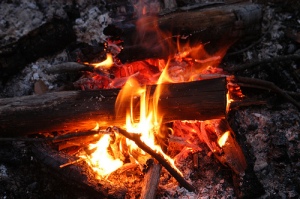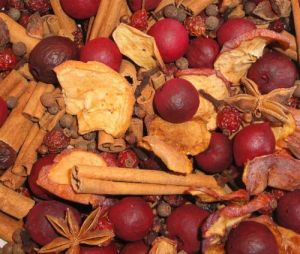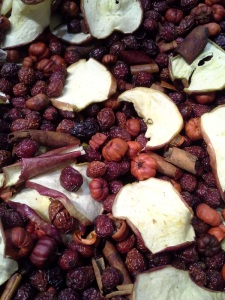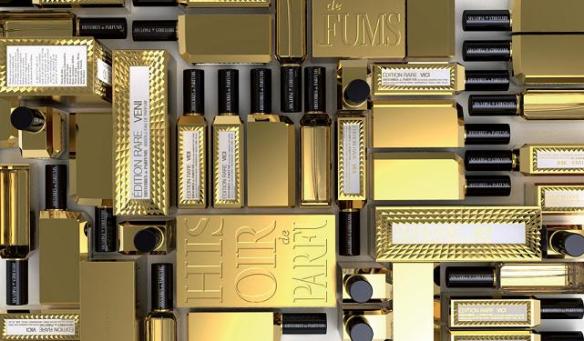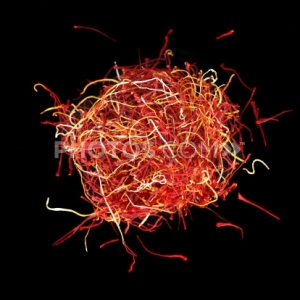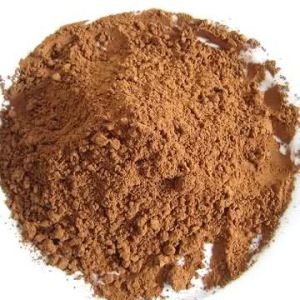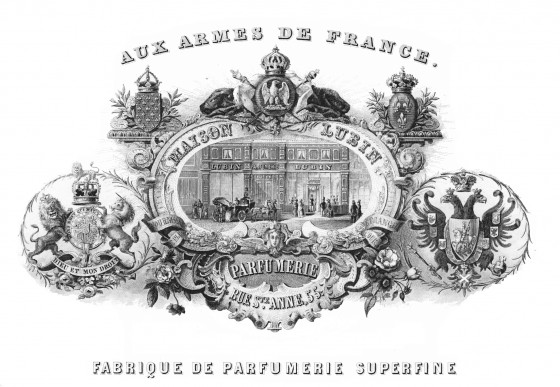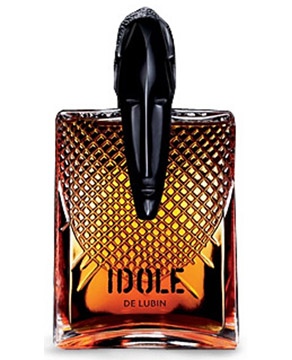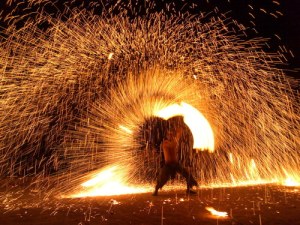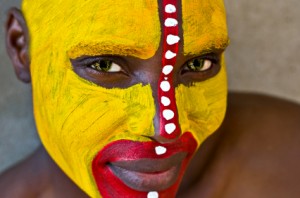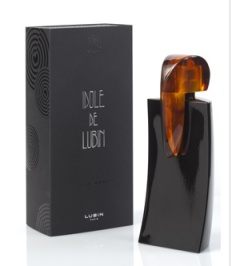Sometimes, you come across a perfumer and you just admire them — even if you’ve only started to explore their line and even if things don’t work out perfectly for you. While it’s understandable to admire the legend that is Serge Lutens, it may seem more unusual to be incredibly impressed by an Indie perfumer after just one perfume. But that’s the case with me and Josh Lobb of Slumberhouse, a niche, indie perfume brand out of Portland, Oregon. I tried his Pear + Olive months ago, was incredibly awed by parts of it, and even more taken with the man behind it. It’s not about whether a particular fragrance works for me or not; it’s about the sheer thought, creativity, effort, and candour of the man himself. To me, Josh Lobb — a 31-year old, completely self-taught perfumer — seems like an American version of Andy Tauer, with all the same talent, approachability, originality, modesty, and honesty.
Slumberhouse describes itself as follows:
Slumberhouse is a boutique cologne label in the heart of Portland, OR; created and inspired by urban and street culture, art, film and music – especially the new school of hiphop and graffiti artists. We are a group of young gents who march to our own beat, embracing an absolute disregard for other brands, trends and marketing cliches. Slumberhouse represents an unequivocal love for the art of fragrance making.
What’s captured my attention, however, is the fascinating genuineness of Josh Lobb. In his personal blog on the website, the talented Mr. Lobb reveals his personal struggle with keeping costs down while using the best, absolute ingredients; his realisation that he was barely breaking even with many scents; and his personal journey in making some of the Slumberhouse fragrances. And, from the start, I was intrigued by Jeke.
Jeke is classified on Fragrantica as a “woody oriental” perfume. It was originally an Eau de Parfum but, just recently, that was discontinued and the perfume was made available solely as an Extrait de Parfum concentration. As I’ll explain later, CaFleureBon says that there are some minor alterations and difference with the new version which has significantly less smoke than the Eau de Parfum. Unfortunately, that is the version that I obtained from Surrender to Chance (which doesn’t carry the new extrait). However, the two versions seem sufficiently alike to make it worth a review of the EDP, though I’ll update it later if I ever obtain the pure parfum extrait.
Slumberhouse’s website description for Jeke is as follows:
A breath of fog in the autumnal humidor.
Benzoin, Patchouli, Tobacco, Lapsang Souchong, Vanilla, Clove
Fragrantica‘s notes are slightly different and would make the full list seem more like this:
Cade, Tobacco, Patchouli, Benzoin, Labdanum, Lapsang Souchong, Vanilla, Clove.
Cade is a very big part of Jeke, so it may be worth a brief summary of its aroma. It is an oil extracted from the juniper plant and has a very smoky, campfire, phenolic, tarry character (which explains why it is often paired with birch tar in leather fragrances). In Jeke, it dominates the opening which is an unusual mix of: burnt rubber, diesel, smoke, tobacco, patchouli, molasses, and leather. There is a slightly mentholated, eucalyptus undertone to the smoky campfire of the cade, as well as a dark, black, slightly rubbery, leather element. The tobacco smells just like the concentrated form in chewing tobacco and, at this stage, not like the sweet, fruited leaves used in pipe tobacco. Flickering all around the edges is a chewy, black, thick sweetness that is as dark as molasses and far heavier than that evoked by labdanum resin. The molasses note is infused with heavy, spicy cloves and dark, black patchouli.
Something about the opening minutes of Jeke evokes not only a very butch, hyper-masculinity but, also, Halloween. The perfume is far more than just the scent of fall; it really brings to mind Halloween night with its darkness and the feel of burning leaves in the slightly chilled air. Yet, that butch, rubbery, diesel-like nuance quickly softens from the extremely sharp, sometimes overpowering, raw beginning to something with smoother, more manageable smokiness.
Jeke’s tarry smokiness reminds me strongly of Serge Lutens‘ Boxeuses which I just recently reviewed, only Jeke takes the darkness, smokiness, tarry, molasses and leather character of Boxeuses and amplifies it by a hundred in a very Mad Max sort of way. For the opening minutes, at least, when Jeke lacks the smoothness and fruited softness of Boxeuses. Yet, despite its initial intensity, there is a very plummy undertone to Jeke which also reminds me of Boxeuses. In the latter, it was a much sweeter, much more multi-faceted, fruited molasses but, in Jeke, it feels very much like a dark plum purée. Stewed prunes in a light, sweet, syrup.
There is also something else going on, something I initially couldn’t put my finger on, but an incredibly familiar scent. It was driving me a little mad trying to pinpoint it, and then it came to me. Potpourri! Jeke has a massive element of potpourri underlying every part of its character. I actually have a bag of expensive red and purple potpourri with wood shavings and spiced fruited elements that I took out to compare — and it’s identical to Jeke! Spiced red apple with mulled wine potpourri. Once you make that mental association in your head, it’s impossible to shake off. Later, in a second test, I took my sample of Jeke, applied a hefty, double dose to my other arm, sniffed, and…. yes, spiced apple potpourri from the start.
Fifteen minutes into Jeke’s development, the perfume shifts a little. It’s even softer now, a lovely mélange of incense, smoke, prunes, spiced apple potpourri, tobacco and dark resins. There is a subtle tea note that truly does evoke the smoky nature of Lapsang Souchang tea. The clove element has relaxed, the rubber-diesel accord has receded, and the whole perfume feels significantly warmer and better-rounded. Yet, there is still a subtle singed element, along with the feel of burning leaves and campfires; Jeke still evokes Halloween; and it is still extremely potent. However, that rubbery, mentholated, diesel edge has gone, taking away the butch elements and ending my thoughts of Mad Max in the Thunderdome.
Instead, now, all I can really smell is potpourri with its mix of autumnal apples, dark fruits, smoke, and a slightly sharp, dried patchouli sweetness. Every fall, one of my neighbors would burn a particular scented candle from Slatkin, along with its scented oils, over every inch of her house — and the aroma is incredibly close to what wafted off my arm. Jeke is smokier, has a noticeable tobacco nuance and subtle flickers of black rubber, but the dominant note on me is always red apple potpourri. It’s cozy, but not quite what I had expected, if truth be told. The leather nuances vanish after the first hour, along with all traces of rubber, leaving Jeke with nothing more than that main accord, trailed by fruited tobacco and cade smoke. Then, to my surprise, Jeke becomes completely abstract at the start of the third hour: amorphous, muted, generalized spice and smoke notes. And it remains that way for the rest of its duration.
Another unexpected surprise is Jeke’s sillage. Slumberhouse perfumes are famous for being powerhouse scents of massive duration and strength, but that didn’t quite apply to Jeke’s projection on me. The perfume began with good projection that started dropping about 20 minutes into its development; Jeke became close to the skin just short of the 90 minute mark; and it became a skin scent after the second hour. It was so light on the skin that I thought it was close to dying after 3.5 hours. It didn’t, but every hour, it felt like Jeke was going to finally vanish, only to have the subtlest, faintest traces cling doggedly and stubbornly to the skin. (Votes on Fragrantica overwhelmingly put Jeke’s sillage at “moderate,” but I have to wonder if that’s for the Extrait version. Almost everyone, however, agrees that the longevity is enormous.) All in all, Jeke lasted 9 hours with a small dose and 10.25 hours with a large dose with most of that time passed as a skin scent that was primarily abstract sweetness, spice and smoke. The drydown — all 6 hours of it — was very pretty but not always easy to detect in its muted quality on my skin.
Jeke ended up not being my personal style, but I think it’s a very good fragrance. My difficulty lies in the potpourri element. I didn’t see any references to it in the largely positive Fragrantica comments, but a search for Slumberhouse, Jeke and potpourri brought up a few Basenotes threads where a number of people detected “red apple potpourri” or “potpourri” in some other Slumberhouse fragrances. One example would be Rume, which a Basenotes commentator said was “a bit too literally potpourri-like for me to wear very much,” though he ended up buying a bottle because he was such a huge Slumberhouse fan. What really reassured me, however, and made me realize I wasn’t completely insane for detecting potpourri was a comment from Mr. Lobb himself. In another Basenotes thread, a commentator (“alfarom“) posted an excerpt of an email in which Mr. Lobb described Grev (another Slumberhouse fragrance) as “a kind of masculine potpourri with a slight tinge of red apple skin.” Honestly, that would be a pretty good description of Jeke Eau de Parfum, too, except I think there would be a dash of plum (or mulled wine) to go with that spiced red apple skin accord. The bottom line, however, is that “masculine potpourri” seems to be a sort of signature base for a number of Slumberhouse fragrances.
As noted earlier, Jeke is now available only in extrait de parfum concentration, and not in the Eau de Parfum which I’m reviewing and which is offered at decanting sites like Surrender to Chance. I once read Mr. Lobb’s explanation for the change and the differences between the two perfumes in his Slumberhouse blog, but the website is almost always down when I try to access it. So, instead, so I shall rely on CaFleureBon‘s comparison of the two fragrance formulations:
Jeke Extrait… [“seemed like a richer opulent version of the EDP”] for me as in its EDP form this is what I call a “smoke monster”. Sometimes it would eat me alive and other times it would surround me and fascinate me before leaving me unscathed. The core of Jeke in both forms is the combination of cade and tobacco over a resinous base. In the Extrait form the “smoke monster” is much more controlled and for the first time I noticed an amazingly beautiful patchouli lurking among the maelstrom. Once I had them side-by-side I really noticed the patchouli in the EDP but the whole composition seemed more balanced and when the labdanum and benzoin kick in this really feels decadent. The Extrait feels like a rough jewel which has now been cut and faceted into a brilliant gem.
It sounds to me like Mark Behnke’s experiences with Jeke EDP involved significantly more smoke than what I experienced. In fact, his comments about the patchouli in the Extrait form makes me wonder if the “potpourri” aspect is now even stronger than before. But it is the smoke issue which really leaves me feeling a bit bewildered, especially when I read the Fragrantica comments where some people find the smoke to be far too powerful. One person even compared Jeke to Andy Tauer‘s Incense Extreme, finding that the Jeke blew the Tauer out of the water. (“Tauer represents the violins. Jeke the symphony of churches.“) I have no idea if the comments about the overwhelming amount of smoke apply to the EDP or the Extrait, but judging by the dates, I would suspect they’re referring the Extrait with its milder quantity. In which case, I can only say that I didn’t find the supposedly “stronger” note in the EDP version to be overpowering at all. It certainly wasn’t a “smoke monster,” to me.
Out of all the reviews out there for Jeke, my favorite comes from a commentator, “42gr,” on Fragrantica who wrote, in part:
I’ve tested my way through, many fragrances.
This blows me away, away, away.
It resonates in my head. It repeats.It is so good it feels illegal to feel this good about a fragrance.
I am drinking single malt Islay Scotch in my father’s Orthodox Church. The white bearded priest swings his silver censer of burning smoking resin. Incanting.
It reminds me of burnt ashes from the campfire from the night before. Laphroaig, Peat, Church Resin, Medicine. And then a touch of sweet tobacco. […]
This is Etta James singing I’d rather go blind.
Jeke is completely and utterly an intoxicating fragrance.
I pay no other this homage.
Smoky, dirty, gorgeous.
I didn’t have the same experience (at all) and, yet, I can absolutely see his vision, what he felt, and why. I can especially see why he’s imagine drinking Laphroaig (my absolute favorite single malt) in an Orthodox church filled with incense. For the sake of completely accuracy, I should add that he later updated his review to add that, in time and with extensive wearing, the amount of smoke felt far, far too excessive, especially in an Australian summer. However, in all fairness to Jeke, I really don’t think it’s a fragrance to wear in 104 degree temperatures!
The bottom line is that, regardless of version, I think Jeke is a perfume that will appeal enormously to people with certain tastes. Men who adore smoky, tobacco fragrances will probably love it. And some women may greatly enjoy the smoky, campfire, fall aspects, if they don’t mind the more rubbery, diesel-like start. However, women who are used to more mainstream fragrances, or who prefer either fruity, clean, floral or gourmand offerings, will probably find Jeke to be far too masculine in nature. Those who love sweet, fruited florals with a strong gourmand undertone would probably prefer Pear + Olive. I think it all depends on what you’re used to.
As for me, I remain a huge fan and admirer of Mr. Lobb. I can’t believe he’s self-taught, and think that he’s incredibly talented. Slumberhouse is a house worth exploring, so I truly hope that more people will try out the line.



